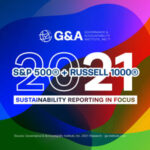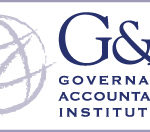Of the 30 companies in the chemicals sector whose environmental and sustainability reporting was analyzed by the Roberts Environmental Center in 2006, the largest, BASF (Germany), clearly had the best environmental and sustainability reporting based on the Center’s Pacific Sustainability Index (PSI) with a grade of A+. The next best reports, with grades of A and A- were Praxair (US), a 10th the size, Dow Chemical, nearly as large as BASF, and Asahi Kasehi (Japan), half its size. In the B range were DuPont (US), Lyondell Chemical (US), Nalco (US), Bayer (Germany), and PolyOne (US) making a sweep for German and American companies. In our previous sector reporting it is unusual for so many American firms to be near the top.
As in most other sectors we have studied, there is a positive relationship between company size and quality of reporting, and size explains fully a third of reporting quality in this sector. Even so, among the smaller firms in our sample, Praxair, Asahi Kasehi, Lyondell Chemical, and Nalco score well above average for their sizes. The lowest scores are for some of the smallest American companies in the sector, and for the only Saudi (Sabic) and South Korean (Hanwha) firms in the sample. As usual, there is essentially no relationship between PSI score and net income or net profit margin.
All materials were scored using the Center’s Pacific Sustainability Index which also provides grades for six subcategories of reporting. The highest grade of A+ for the environmental categories went to BASF for expressed environmental intent, Asahi Kasehi and BASF for environmental reporting, and Crompton Corporation, Asahi Kasehi, and BASF for environmental performance. For the social categories, A+ went to Praxair for expressed social intent, to BASF for social reporting, and to BASF for social performance.
In this sector the most reported environmental variables were research and development into green technologies, environmental expenses/investments, amount of energy used, and protection and enhancement of the natural environment. The most reported social information was employee health and safety, community development and education, and business ethics/anti-corruption practices
These findings are based on the information available on the web sites of the largest 30 companies in the chemicals sector of the 2005 Fortune Global 500 and Fortune 1000 lists as of December 6, 2005.



